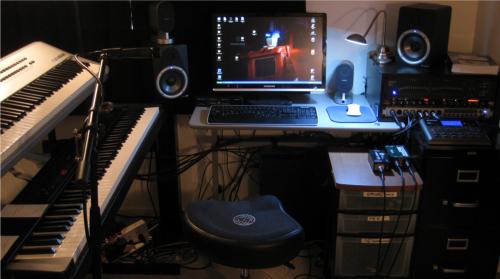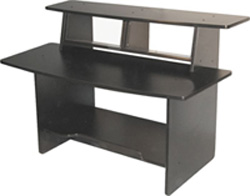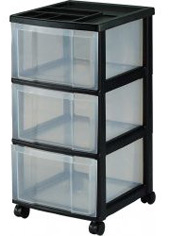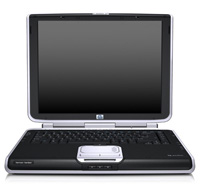Earlier today I went over the basic preparations required to make a sound check run smoothly. Now, we’ll get down to the nitty gritty of how you and the house technical staff can best work together to bring your audience a truly memorable and killer show.
Follow the procedure.
The venue engineers will guide you through the process of sound checking, but knowing what’s coming saves time, and demonstrating familiarity with the process provides reassurance to the technical team and the promoters.
The venue engineers will guide you through the process of sound checking, but knowing what’s coming saves time, and demonstrating familiarity with the process provides reassurance to the technical team and the promoters.
The first step involves finding the peak level for each source, so that no matter what happens in the show, the channels won’t overload and will operate in their butter zone for the majority of dynamics levels. Thus, when the engies call for you to play, tell them, “OK, here come some peaks,” then really dig in and give themthe loudest thing you could imaginably play during your set.
For those using pedals, be sure to stage your gain such that turning on or off any given effect doesn’t cause any significant volume changes. For those using patches or samples, be sure all your sounds produce a fairly consistent level. Depending on your medium, normalizing or gently compressing your sounds in advance can help this tremendously. Start with a clean and clear tone or sound, and play long, resonant notes.
Once you’ve caught the engineers’ eyes, you can move on to step two, the tonal and textural stuff. With the input level in place, the engineers will start applying inserts and EQ to the channel, so this is the time to begin playing throughout the full range of the instrument, loud and soft, high and low, staccato and legato, clean and effected. [Vocalists who use effects, please see NOTE #1 at the bottom.]
When this process of level and tone setting has been iterated across every source, you’ll move on to the third step, building your monitor mixes. The monitor engie will ask each player in turn what (s)he wants in his/her wedge. When answering, try to follow the same order of channels you just worked through, indicating for each source how loud or “forward” it should be in the mix. If one or two sources are significantly more or less crucial to monitor than the rest, be sure to note that after providing the complete list of what you’ll need to hear. For example:
• A singing guitarist might say: “I’d like just a touch of kick and snare, a moderate amount of bass, a bit of my own guitar, a fair amount of the other guitar, and plenty of keys and my voice. The most important thing for me to hear is my own voice and the keyboard. If you have to cut something, pull the drums out.”
• A drummer who also plays a sample pad could reply: “I don’t need any of my kit, but please give me a bunch of bass, a middling amount of guitars and keys, a ton of my sample pad, and just a little vocals. The most important source for me is my sample pad, and the vocals can go away if they have to.”
Once the monitor engie has basic mixes up for all the wedges, the band should play and loop a part of a song that uses the most sources possible. [Why? See NOTE #2 at the bottom.] While continuing to loop the part, each member should catch the engie’s eye, one at a time, to fine tune his/her mix.
When it’s your turn, point at a source, then point up or down, then point at the wedge where you want the change. This says to the engineer, “I want source in mix.” Keep looping the part until all the monitor mixes are to taste. A smile and a nod or the “OK/perfect” hand sign indicates to the engie that your mix is to your liking. Repeat as necessary until you’ve covered all your sources.
You may have to tolerate some feedback during your check while the engineers maximize their gain staging and chase down trouble frequencies. Keep playing through the feedback [Again, see NOTE #2.] so the engineers can find the ringing frequency amidst the dynamic and shifting signal. Realize that although standing over a ringing wedge is obnoxious and even occasionally painful, it certainly beats gambling on feedback returning mid-show, so taking a few extra minutes to properly and sufficiently ring out a wedge is always time well spent.
When you and your bandmates are happy with your monitor mixes, it’s time for step four. Stop the loop you’re playing, and tell the engineers that your mixes are good and that you’re ready to play a song and check the house. Pick a couple songs from your set and play them from beginning to end, without stops. [See NOTE #2.] If your wedges need further tuning, signal the monitor engineer while you play.
After a couple songs, ask the front of house engineer if (s)he has heard enough and has the mix dialed in. Once the FOH engineer is happy, ask to play one more tune so the band can hear the sound in the house. Take turns, one band member at a time, walking through the house. If you have any requests for the FOH engineer, now is the time to make them. When every band member walked the house, and the band and engineers are all sufficiently satisfied, then the check is complete.
If your gear must be moved before your set, follow this procedure immediately, well before you consider heading to the green room or the bar or to dinner:
• Mark the onstage position of your gear, using 2-3” strips of tape placed in right angles at the corners of each piece of gear, including mic stands and stage monitors. Using bright and uncommonly-colored tape helps these “spike” marks show up under low stage lighting and allows for your setup to be easily distinguished from other acts’.
• Once the positions of all your gear has been spiked, carry or roll your gear from the stage to your cases at side of stage. Don’t bring your cases to your gear, as that, as before, both doubles the amount of carrying you have to do and screws up the backline staging occurring both onstage and next to it. Start with the delicate items (guitars, cymbals, electronics, etc.) and work towards the rugged stuff (stands, drum hardware, amps, etc.), all the while making sure that the gear will be accessible in the reverse order from side of stage come show time, so the last things to get uncased before your set are also the most delicate. This protects your gear as much as possible and allows for a quicker changeover later on.
• If you are sharing any of your own gear with other bands, be sure that it’s properly labeled and placed somewhere immediately visible to them when they arrive. If you aren’t sharing anything, carefully remove every last piece of gear you care about; an unlabeled power strip or 1/4″ cable or hi-hat clutch left on a stage quickly becomes the property of whomever picks it up.
• Do a quick “owner’s walk” of the stage to be sure you’ve collected every last thing you brought with you. Once this is done, enjoy your break! The engineers, not to mention the bartenders and waitstaff and barbacks and management and security and promoters and bathroom attendants, usually don’t get such a break, so saying thank you and shaking their hands on your way out, as a demonstration of your appreciation for the work they performed, is always a welcome and valued show of respect.
NOTE #1: Unless you are using very particular, obscure, and uncommon effects, you will be much better off by letting the engineers use their house effects. Reverbs and delays are ubiquitous and the engineer will likely put some on your voice even without you asking.
Unless you are running an advanced real-time autotuning rig, or absolutely have to punch in a flanger at only a few crucial moments in a couple songs, or have a calibrated and road-proven harmonizer that needs different settings recalled between each song, let the engineers handle your effects. Otherwise, you’re stuck with the inferior preamp (if there even is one) in your unit, and the monitor and FOH engineers’ hands are severely tied since they can’t separate your vocals from the effect in the channel, meaning the effect will carry into any monitors and submixes, will throw off any inserts and EQ on the channel, and will, sometimes drastically, lower the gain before feedback. Your other option is to pickup a quality mic splitter so that you can send two channels to the engineers, one clean and one effected. Thus, the clean channel hits a proper mic preamp, inserts, and EQ before any effects, meaning both your monitor and FOH mixes will be cleaner, more flexible, and deliver more gain before feedback.
NOTE #2: An engineer cannot fix or adjust something that isn’t happening or being played, so stopping a song to ask for an adjustment is usually completely counterproductive. Instead, keep the tune going and ask over a vocal mic, loudly if need be, for what you need. Alternatively, or if you need something during the show, just catch the engineer’s eye (as any engineer worth their pay will look across the stage periodically, just like a good driver scanning his/her mirrors), and indicate what you need with a couple hand signs. If there is a monitor desk at side of stage, you can also always walk over to talk to the engie, so long as you keep playing. Remember, if in the process of dialing in a mix, an engineer doesn’t want to hear something, they can always mute the related channel, but if they need to hear something when you’ve stopped playing, nothing can progress.
Read more: http://ilhamnurulresources.blogspot.com/#ixzz1LQRLC9zB








 Nothing will scare off a great idea faster than searching for cables, mics, FX pedals, tuners, etc.Musical inspiration is delicate like a house of cards... one false move and it all falls down. It's also be like playing Jenga while drinking.
Nothing will scare off a great idea faster than searching for cables, mics, FX pedals, tuners, etc.Musical inspiration is delicate like a house of cards... one false move and it all falls down. It's also be like playing Jenga while drinking.


 Now that the difficult decisions have been made, it's time to hook everything together so that the precious audio data can be delivered right where it needs to be.Check out the Studio Cable guide for more information on how to get just the right tools for the job.
Now that the difficult decisions have been made, it's time to hook everything together so that the precious audio data can be delivered right where it needs to be.Check out the Studio Cable guide for more information on how to get just the right tools for the job.